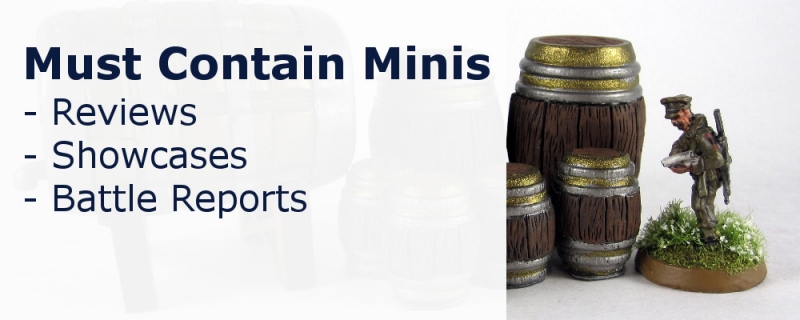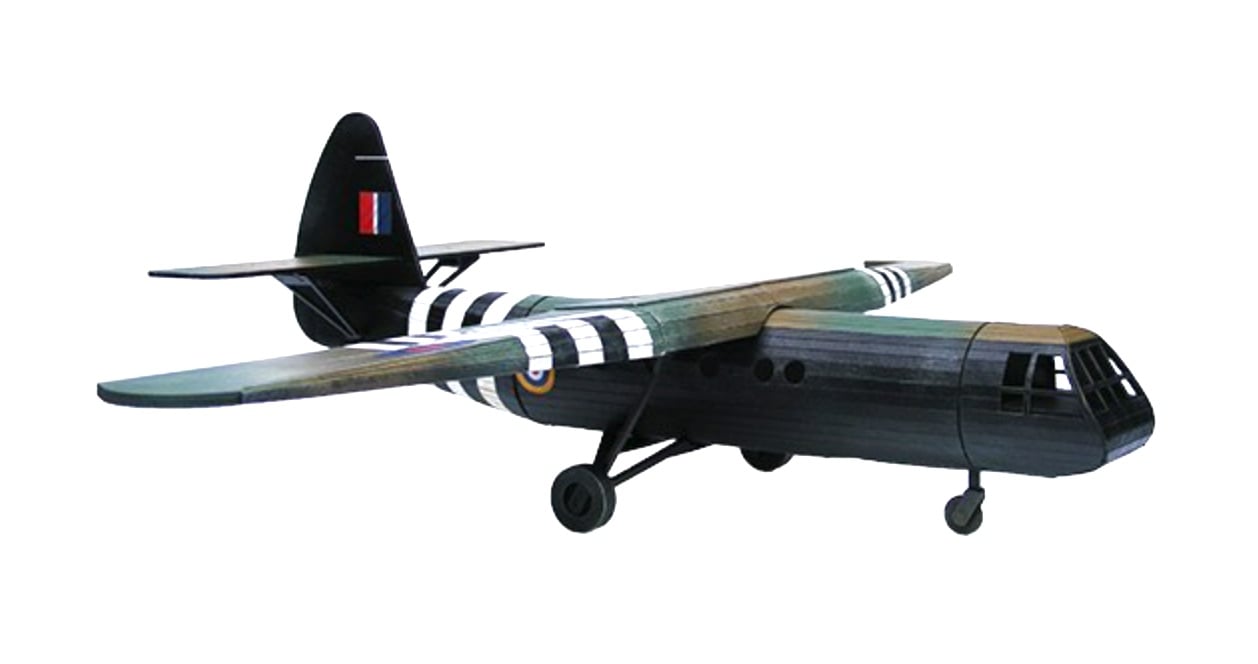Why You Should Make the Jump into Historical Games with Bolt Action

Right off the top, I will let my readers know that Bolt Action is my current favorite game. As a consequence, you can expect this review to be a little biased. That said, I play and read a lot of rule-sets, so I have a good idea of the game’s competition.
The obvious reason to play Bolt Action would simply be if the aesthetics hit home for you. It is WW2, 28mm and has highly stylized miniatures by Warlord Games. If the minis by Warlord don’t strike you, there are many other manufacturers that also produce 28mm WW2 Miniatures.
The game system itself is quite fun and is something that 40K players will be able to adapt to easily (there are a lot of similarities). So if you like 40K and want to try a WW2 game, this one might be right up your alley.
Now, let’s take a closer look at Bolt Action.
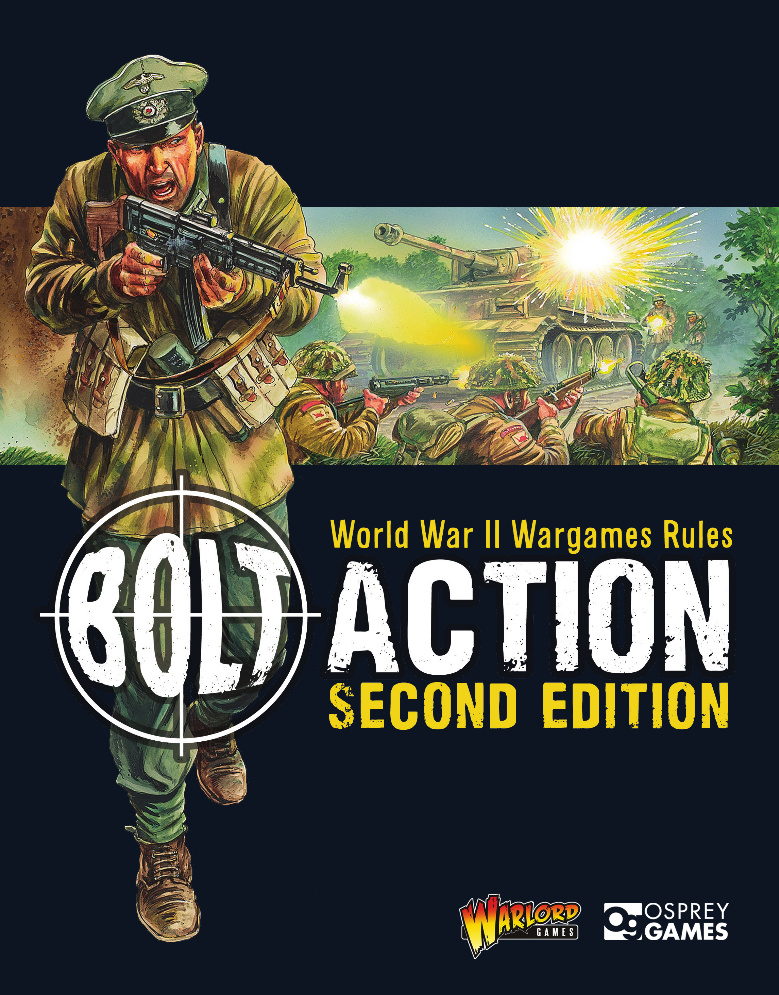
The Cover of Bolt Action Second Edition. Image used with permission from Osprey Games.
Order Dice
One of the core mechanics of Bolt Action is its activation system. In this game, both sides place in die in a bag for each unit they command. Without looking, they draw a die. Whose ever die comes out, gets to take their turn. They choose one unit and assign them an order. That order determines what the unit can do in their turn.
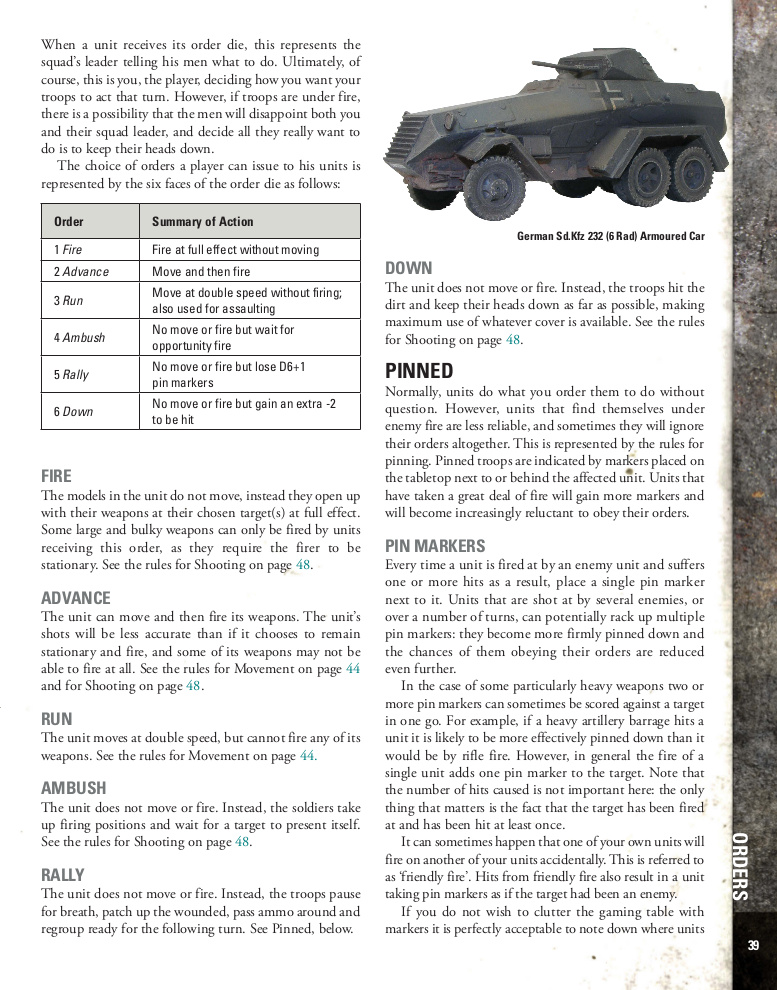
Which order the player chooses determines what the unit does. Image used with permission from Osprey Games.
If a unit takes an order but has “pins” on it from enemy fire, then that unit must take an orders test. If the unit passes the test, they may take their action. But… If they roll double 6s, then it is called a FUBAR, and they may very well fire on their own units!!! Yikes!
Once the unit takes its order, another die is drawn. This goes on until the dice bag is empty, which signifies the end of the turn.
Movement
Movement in Bolt Action is very simple. Infantry can move 6″ and then shoot, or run 12″ without firing their weapon. If there is rough ground or an obstacle in the way, then the unit can only advance (move up to 6″ and fire). They may not run over such terrain.
Vehicle movement is super cool! Vehicles move double the distance on roads and also have the option to either move a short distance and fire or move a longer distance without attacking. Depending on the vehicles speed, they may take a set number of turns in the round. At the end of the book, there is a chart of how many 90 degree pivots a vehicle can take over its movement. For example, a tank that “Advances” may move 9″, pivot once at any point in the movement (up to 90 degrees) and fire. A tank that “runs” can travel up to 18″ in a straight line with no pivots or weapon attacks. Using a road generally doubles the distance a vehicle can move in a turn.
Different vehicles get different movement speeds and different numbers of pivots.
Of course, there is more complexity to the game than what is above, but this is movement at its most basic form in Bolt Action.
Shooting
If you are familiar with 40K, shooting in Bolt Action will seem familiar. You choose a target and have a base value of 3+ (on a six-sided die) to hit the opponent. Add the modifiers and see if you hit. If you hit, roll to see if you damage. For this one, you are rolling against the target’s skill level. Veterans are killed on a roll of 5+, Regulars on a 4+ and Inexperienced on a 3+. You can add your weapon’s penetration value for easier kills. If the opponent has a medic nearby, he (or she) will be given a 6+ saving throw for any casualty hit by small arms fire.
There is no pre-measuring, and you cannot fire through your own troops.
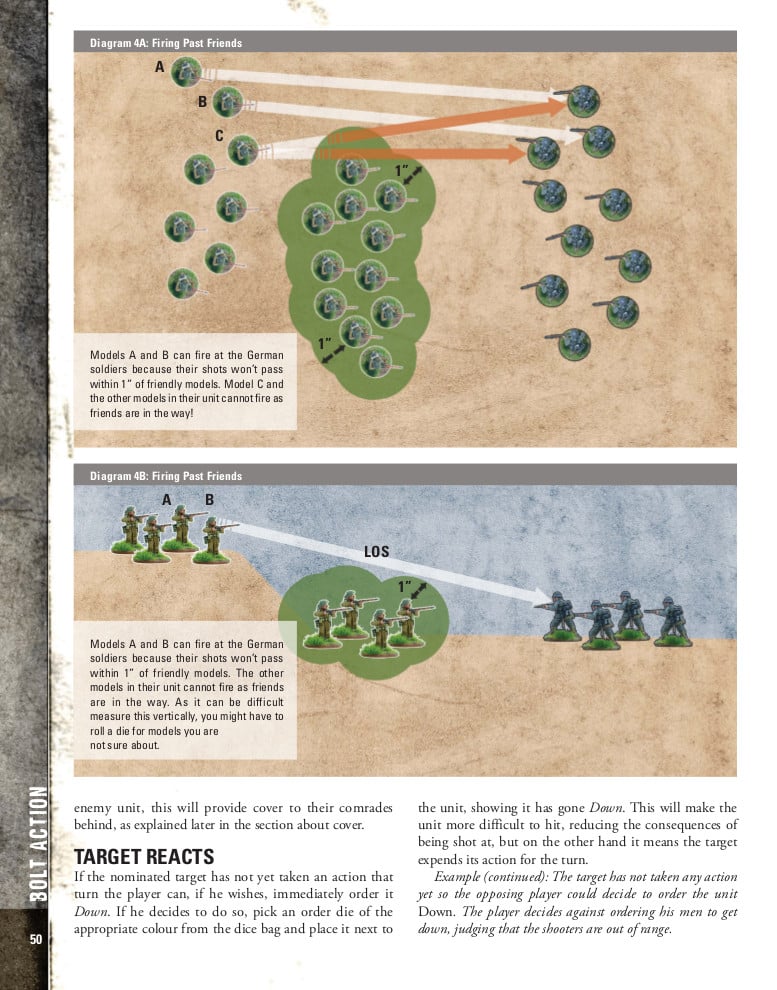
A sample page from the Bolt Action Rulebook about firing through your own troops. Image used with permission from Osprey Games.
If you fire at armor, then you roll against an armor value rather than a skill value. If you match the armor value, then you score a glancing hit, while exceeding the number will score a penetrating hit. You then roll on a damage chart to see what happens to the vehicle.
As for indirect weapons, you fire at the unit. The first time you need to roll a 6 to range in. The second time, a 5+. This goes on each round until you either hit or the target moves. If the target moves, you have to start all over at six again. If you hit, you constantly hit on all subsequent turns on a 2+ (until the target moves or is destroyed). Heavy explosive weapons on the field use templates to determine how many soldiers are hit in a strike.
Winning
Bolt Action is scenario based, and within the core rulebook are 12 possible scenarios to play. Conditions for the win are dictated by the mission and change for each scenario. Even more scenarios exist if you buy into their campaign book series.
Force Selection
One of the things that won me over with Bolt Action is that it has a force selector of five separate nationalities within the core rulebook. Each army has their own special rules and units available to them. At the same time, the units are fairly equal between nationalities (vs. other game systems), so I found the game well-balanced right from the start.
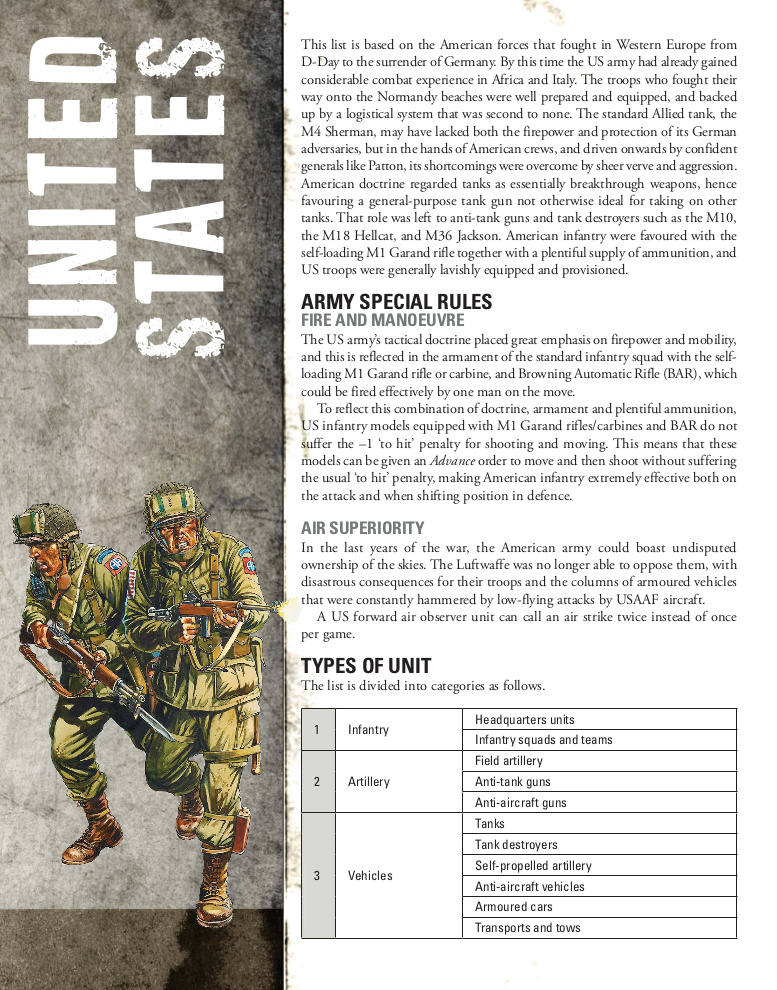
Another sample page from the Rule book. Here you see a little bit about the American Army in Bolt Action. Image used with permission from Osprey Games.
Having these force selections in the core book helps players save money as it allows players to decide which army to play. As you get further into the system, you will want to buy the Army Books for each nation you want to play, but the armies presented in the book are a fantastic place to start.
A standard game comes in at 1000 points and will often have 30 to 50 soldiers a side as well as one to two vehicles. Depending on what you choose to bring to battle, your numbers may be lower or higher. For example, if you bring a big tank and a second vehicle, it is possible that you may end up with an army with only 12 soldiers. How well that army does depends on how you play, but generally, the more infantry you have, the better you will likely play.
Verdict
Personally, I love Bolt Action and would recommend it to anyone that wants to play 28mm World War 2 in a system that feels familiar to 40K players. The dice draw mechanic for orders adds a lot to the game, and I am honestly surprised that fewer companies haven’t adopted this blind draw into their own systems. It is great!
On top of being a great system, the price is right too. You can buy a 1000 point army for $120 US. Buy the books, and you are all in for around $20o US. That is a steal versus the entry costs of other games out there!!!
Wrapping it Up…
Hopefully, you enjoyed this quick review of Bolt Action. In my reviews, I do not score products. Instead, I aim to educate readers on what to expect with the product so that people can make up their own minds. The reason for this is everyone’s opinions are different. What is a selling feature for me, may not be for you (and vice versa).
If you want to see more about Bolt Action, head on over to the Bolt Action Section of Must Contain Minis for more Bolt Action articles written by me. We have over 50 articles related to the system over there. I also interviewed folks from St Andrews Wargaming that may be of interest to you. There I talked about my gaming past but also talked about some of my favorite Bolt Action Experiences, but through a lens aimed at 40K players.
Also, stay tuned to Bell of Lost Souls as I will be publishing more Bolt Action content for them in the future.
Read more about great Indy and Historical games on my site!

